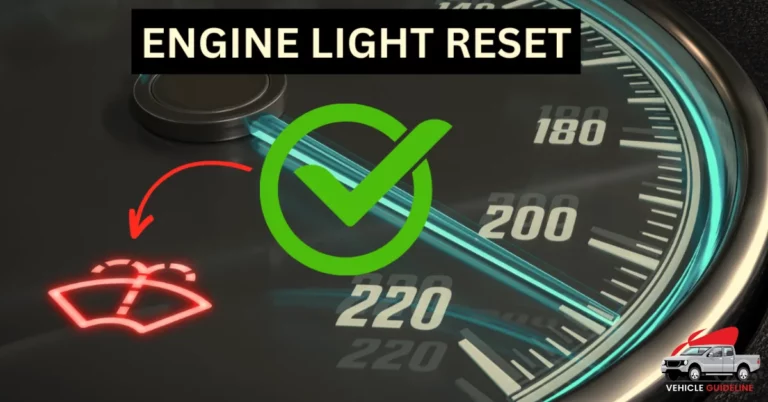GMC Reduced Engine Power Reset | 3 Proven Methods
Have you ever experienced the frustration of your vehicle suddenly losing power and displaying the dreaded GMC Reduced Engine Power reset? Many GMC owners have encountered this issue, which can be a significant inconvenience and cause concern. The good news is that you can take steps to reset the reduced engine power mode and get your vehicle back to its full performance potential.
This article will explore the GMC engine power reduced and its possible causes and methods. Whether you are a seasoned GMC owner or someone considering buying one, understanding how to address this issue can help you stay calm and get back on the road confidently.
What Does Reduced Engine Power Mean in GMC?
GMC reduced engine power should be considered an essential safety feature to protect your vehicle from further damage. Seeing the Reduced Engine Power message on your GMC dashboard can cause concern. This warning indicates a technical issue that has triggered the reduced power mode in your vehicle’s engine control module (ECM).
The light appears in your GMC vehicle; it can be pretty alarming. The yellow warning light indicates a problem with the engine’s performance, specifically with the fuel or airflow to the engine being reduced. This power reduction can occur for various reasons, such as a clogged air filter, a faulty fuel injector, or even a problem with the throttle body.
The reduction in engine power will result in the following five symptoms:
- Engine performance takes a considerable hit.
- The GMC’s dashboard is illuminated with a warning light, signaling a check engine issue or reduced power.
- Gradual increase in speed.
- The vehicle experiences a complete shutdown.
- The non-essential elements cease functioning, including the interior illumination, audio setup, electrically operated windows, and lighting arrangement.
What may also shut down Causes Reduced Engine Power in GMC?
When you see the dreaded Reduced Engine Power message on your GMC vehicle, it can be cause for concern. This warning typically appears on the instrument panel when there is a problem. While it may feel like a significant issue, several common reasons can trigger this warning.
Faulty Throttle Body:
Reduced engine power in GMC vehicles is a problem with the throttle body. The throttle body controls the airflow into the engine and determines how much fuel is injected to match that airflow. If it becomes dirty or develops an issue, it can restrict airflow and lead to reduced power output.
Another potential cause is a malfunctioning sensor, such as the mass airflow (MAF) or oxygen sensor, which helps measure air and fuel ratios during combustion. When these sensors fail, they can give incorrect readings to the (ECM), causing it to limit power output as a safety precaution.
Malfunctioning Sensors:
One of the primary causes of this issue is malfunctioning sensors. Advanced sensors play a crucial role in ensuring optimal performance. Even the most reliable systems can sometimes experience malfunctions, resulting in reduced engine power and ultimately causing your GMC to shut down unexpectedly.
These sensors collect data about engine parameters such as air intake, fuel injection, and exhaust emissions. When they send incorrect or inconsistent information to the ECM, it can disrupt the engine’s normal functioning.
This can trigger a safety feature known as reduced engine power mode, which limits the RPMs and prevents further damage to the vehicle. External factors like extreme weather conditions or contamination from dirt and debris often exacerbate them. Issues with wiring connections or faulty ECM programming can also contribute to sensor failures.
Fuel System Problems:
One possible cause of reduced engine power in GMC vehicles could be a clogged or dirty fuel filter. The fuel system plays a vital role in providing the necessary amount of fuel to the engine for combustion, ensuring smooth and efficient performance. Any issue within this system can have significant consequences.
Dirt, debris, and impurities can accumulate in the filter, restricting fuel flow to the engine. There may need to be more fuel supply for proper combustion and power generation. This could lead to symptoms like sluggish acceleration, decreased overall performance levels, and an engine shutdown.
Problems with the Engine Control Module (ECM):
The ECM manages various engine functions, including fuel injection, ignition timing, and emission control. When there is an issue with the ECM, it can result in a reduction in engine power and performance.
One possible cause is a faulty sensor or wiring harness, which can send incorrect signals to the ECM and interfere with its ability to control the engine properly. Another potential issue is a software glitch or programming error in the ECM. These types of problems can occur due to manufacturing defects or issues with software updates.
Exhaust System Issues:
The exhaust system plays a crucial role in ensuring proper engine functioning, and any problems within this system can result in reduced power output. An issue that can cause reduced engine power is a leak in the exhaust manifold or pipes. A leak allows unfiltered air to enter the exhaust system, disrupting combustion and decreasing power output.
A faulty muffler or resonator can restrict airflow through the exhaust system, creating backpressure on the engine and reducing overall performance. It’s essential to address these issues promptly to avoid further damage and ensure optimal engine performance.
Electrical Wiring Issues:
The electrical system in a vehicle is complex, with numerous wires and connections responsible for controlling various components, including the engine. These wires can become worn or damaged, leading to intermittent connectivity or complete failure.
When the electrical wiring in a vehicle starts to deteriorate, it can cause a range of issues, including reduced engine power. Faulty wiring can disrupt the flow of electricity to critical systems and sensors responsible for monitoring and regulating engine performance. This disruption can result in decreased power output and poor overall performance.
3 Proven Methods of GMC Reduced Engine Power Reset:
There are three different methods you can independently try to reset this mode. The fact that these methods are self-service and do not require a mechanic or expensive repairs is their most significant benefit.
Quick Reset
A battery disconnect is one quick and effective method of resetting the GMC Reduced Engine Power issue.
Here is a 4-step reset process:
- Start by turning off your vehicle completely, ensuring all lights and accessories are switched off.
- Disconnect the negative battery cable and wait for 15 minutes.
- Reconnect the negative battery cable.
- Now turn on the vehicle.
This simple action will reset the car’s computer system, allowing it to re-calibrate itself. Once you have completed the 4-step method, it is advisable to eliminate reduced engine power modes. In case the warning light continues to flash, proceed with the second method.
Diagnosing Manually
Diagnosing the cause of reduced engine power in a GMC vehicle can be a frustrating experience. Many GMC owners have faced this issue, only to find that the culprit lies in faulty engine parts.
One method of resetting the reduced engine power is disconnecting the battery for several minutes and then reconnecting it. This can help reset the engine control module, allowing it to recalibrate and potentially resolve any issues causing the reduced power.
- Analyze the given components to identify the root cause of the problem.
- Verify and exchange broken fuses
- Engine oil is changed every 7,500 miles
- Replace the spark plugs after driving 30,000 miles
- The transmission fluid should be changed at intervals of 45,000 miles
- Check and clean the air filter
- Inspect the catalytic converter for any potential malfunctions
- Examine the oxygen and MAF sensors one by one
- Inspect the engine’s ground connections, harnesses, circuits, connectors, and belts thoroughly.
By using an OBD-II Reader
Resolve GMC Reduced Engine Power by using an OBD-II scanner or code reader. These devices can be easily purchased online or rented from an auto parts store. The error codes P0120, and P2135 are common culprits behind this issue, indicating a problem with the throttle position sensor or throttle body.
By connecting an OBD-II scanner to your vehicle’s diagnostic port, you can quickly identify these codes and then reset your car; once you’ve identified the specific code causing the reduced engine power mode, it becomes much easier to research what steps must be taken to fix it.
How Much Does It Cost to Fix Reduced Engine Power in GMC?
The cost of fixing reduced engine power in a GMC can vary significantly based on the underlying issue causing the problem. Minor issues, such as a faulty sensor or a loose connection, can be fixed for around $40 to $100. These problems are relatively simple to diagnose and repair, often involving resetting the engine control module or replacing a minor component.
More complex issues with the engine or transmission can cost upwards of $500 to fix. These issues may require extensive labor and the replacement of major components, such as fuel injectors or throttle bodies, which can significantly drive up the overall cost.
If a faulty catalytic converter indeed drives a reduced engine power message, expect to pay over $2000 for repairs and replacements. This hefty price tag covers parts and labor costs, as replacing the catalytic converter requires specialized skills and equipment. While this may seem like a considerable amount of money to invest in fixing this issue, it is vital to address it promptly.

Final Thoughts:
The GMC Reduced Engine Power Reset is a relatively simple process that can help resolve issues with reduced engine power in GMC vehicles. Following the steps outlined above, GMC owners can reset their engine power and potentially avoid costly repairs or trips to the dealership.
It is important to note that if the issue persists even after resetting the engine power, it may be necessary to seek professional assistance from a certified GMC technician. Regular maintenance and promptly addressing any underlying problems can help ensure GMC vehicles’ optimal performance and longevity.
FAQ’s
Can you drive your car on reduced engine power?
Yes, driving a car with reduced engine power is possible, but it is not advisable. It can affect the overall performance of your vehicle, making it sluggish and less responsive. This can be dangerous in situations where quick acceleration or maneuvering is necessary.
How does altitude affect engine power?
At higher altitudes where air density decreases, engines produce less power due to reduced oxygen content available for combustion. This effect is more pronounced in naturally aspirated engines compared to turbocharged or supercharged ones.







